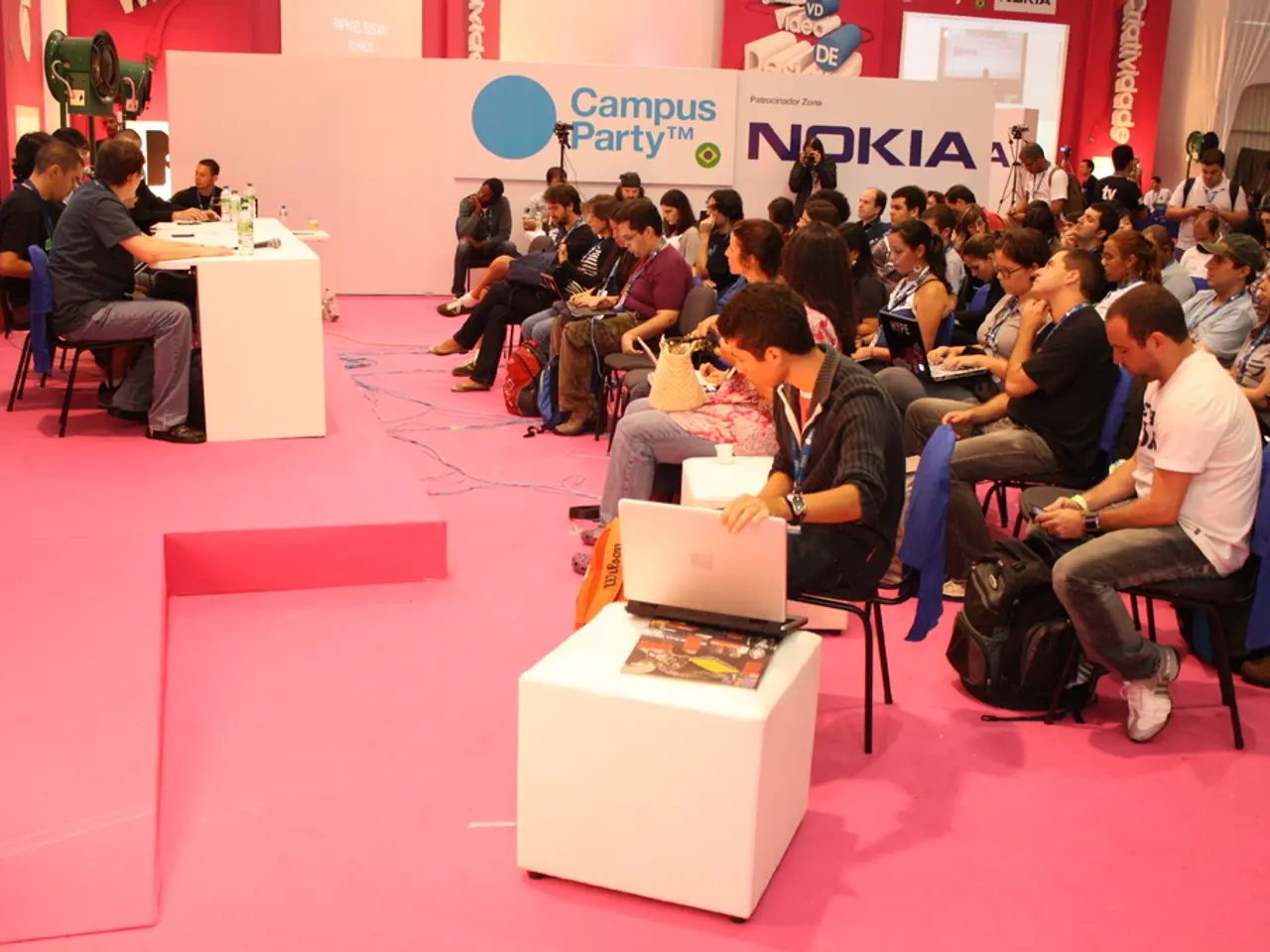Diversifying Horizons: The Reason Broadcast Companies are Stepping into Professional Audio-Visual Industries
In the rapidly evolving world of audio-visual (AV) technology, a new vertical is emerging at the intersection of broadcast and pro AV. According to Todd Riggs, Director of Product Management at Ross Video, this 'broadcast-AV' sector is being created as pro AV seeks simplified workflows and the broadcast industry brings its experience with maintaining complex systems to the table.
One key area where this convergence is evident is in worship spaces, particularly large churches that require high-quality experiences to deliver their messages. Broadcast vendors are increasingly prevalent in this sector, as demonstrated by the Lakepointe church in Texas, a large church project undertaken by Imagine Communications, which resembles a large market television studio, except for the projector, and features a 1080p production with HDR.
The move towards IP-based workflows is a significant factor driving this convergence. This shift includes support for various audio and video formats, compression standards such as JPEG XS and HEVC, and protocols like SMPTE ST 2110. Whole tranches of commonly-deployed workflows, including encoding and decoding, can now be served with the same technologies.
This convergence is also apparent in the corporate world, where companies are realizing the power of internal and external communications through media. Simon Watson, Global Head of Innovation at AV and UCC integrator Kinly, emphasizes employee engagement as a key factor in bringing broadcast practices into the corporate world to improve the quality of presentations. Kinly, in partnership with SmartStage, developed new XR products, Surface XR Studio and Hybrid XR Studio, with the corporate world in mind, aiming to make XR easier to use and operable by one individual.
The corporate versions of these XR products enable the creation of dynamic and inclusive experiences, allowing for the import of individuals, such as CEOs, into any desired environment. AR graphics, similar to those used in TV weather reports, are now possible with corporate XR products, offering more opportunities for audience engagement.
The Santiago Bernabeú stadium in Madrid, best-known as the home venue of Real Madrid, is another example of this convergence. The stadium allows broadcasters to connect to its in-house control rooms for live sports, doing away with the need for OB trucks.
The advent of more universally applicable networking infrastructure, based on IP and supported by accessible and well-defined standards, is generally agreed to be the biggest factor enabling this convergence. Companies like Lawo have long been ready for this convergence, with solutions such as mc2-series mixing systems, diamond and crystal consoles, the .edge gateway, HOME Apps, and many other Lawo solutions feeling at home in a converged broadcast/proAV environment.
As this convergence continues, there is an expectation that some of the more cutting-edge developments that first rose to prominence in broadcast and film, such as virtual production and extended reality (XR), will increasingly cross over to AV spaces including corporate. 5G connectivity is an area of investigation for the future impact of broadcast-oriented technologies on pro AV, with potential for increased flexibility in corporate applications like conferencing.
However, not all sectors are experiencing this convergence equally. Some areas of media, especially public sector broadcasting, are experiencing cutbacks, which may be encouraging diversification into AV. The new infrastructure at Lakepointe provides both day-to-day reliability and flexibility for the multi-campus church, as well as the opportunity to scale up as new ministry opportunities arise.
In conclusion, the convergence of the broadcast and pro AV industries is reshaping the landscape of AV technology. Simplified workflows, immersive experiences, and the ability to create and distribute compelling video content are just a few of the benefits this convergence brings. As the industry continues to evolve, we can expect to see more innovative solutions at the intersection of broadcast and pro AV.







